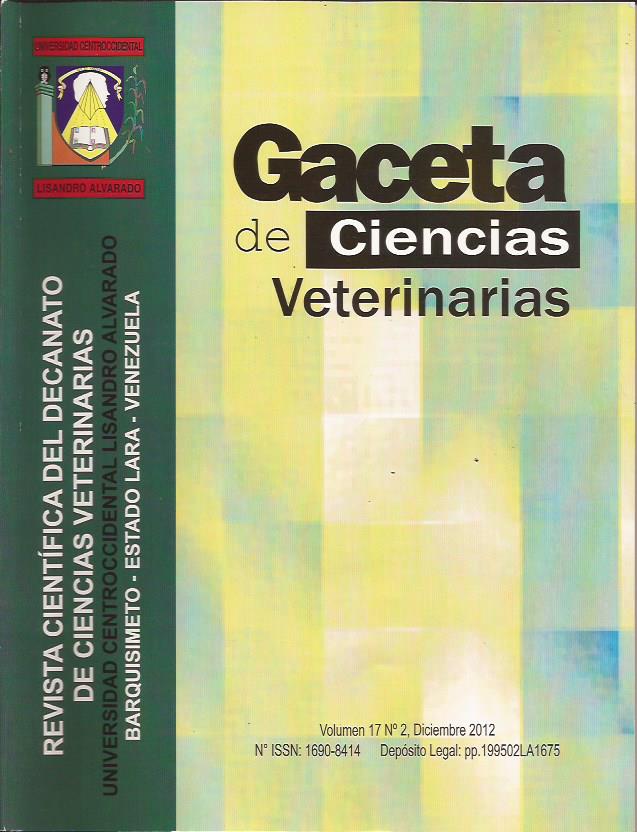Thyroid toxicity of oral overdose of potassium iodide in female new zealand rabbits (oryctolagus cuniculus)
Abstract
This work contains the initial outcomes from studies conducted to analyze thyroid toxicity associated with potassium iodide overdose. This project is based in the histopathological finding of Hürthle cells in a thyroid gland obtained from a rabbit housed in an animal facility. The goal of this study is to report thyroid toxicity associated with oral administration of iodide through clinical signs, histopathology and ultrasound scan. The iodide was used as potassium iodide (KI) iodide in female New Zealand rabbits (Oryctolagus Cuniculus) at a concentration of 200 ppm (200mg/L) in drinking water administered over a 4-week period. Rabbits treated with KI showed distress, slight lymphopenia and neutropenia. Ultrasound valuation of the thyroid gland revealed multifocal cystic space. Histopathology evaluation showed follicular cells with vacuolar degeneration and parafollicular depletion. Preliminary results of the present study indicate that potassium iodide may disrupt thyroid function by direct cytotoxicity to follicular epithelial cells. Although we have to increase animal numbers, include male rabbits and optimize potassium iodide dose, the toxicological model presented in this work represents an opportunity to study toxicological disorders affecting the thyroid gland.
Downloads
References
Cannon J. The significance of Hürthle cells in thyroid disease. The Oncologist 2011;16(10):1380-1387.
Montone KT, Baloch ZW, LiVolsi VA. The thyroid Hürthle (oncocytic) cells and its associated pathologic conditions: a surgical pathology and cytopathology review. Arch Pathol Lab Med 2008; 2: (8):1241-1250.
Chistiakov DA. Immunogenetics of Hashimoto’s thyroiditis. J Autoim Dis 2005; 2:1.
Xie Y, Zhou G. Effects of meso-2, 3-dimercaptosuccinic acid, potassium iodide and chlorophyll on lead accumulation in male mice. Int J Occup Med Environ Health 2017; 30(1):87-93.
Ilin A, Nersesyan A. Toxicology of iodine: A mini review. Arch Oncol 2013; 21:65-71.
Soliman EB, Zahran WM, El-Bakry HA. Histological structure and hormone profile of pituitary and thyroid glands affected by castration and iodine supplementation in male rabbits. Proceedings of the First International Conference (Egyptian British Biological Society, EBB Soc) Egyptian J Biol 2001; 3:38-47.
Animal Welfare Act (AWA), United States 2000; 7 USC:213-2159.
Du Y, Gao Y, Meng F, Liu S; Fan Z, Wu J et al. Iodine deficiency and excess coexist in China and induce thyroid dysfunction and disease: A cross-sectional study. PLoS ONE 2014; 9(11):e111937.
Capen CC, DeLellis RA, Yarrington JT. Endocrine system. In: Handbook of Toxicologic 2002. Pathology, Vol. 2. Haschek WM, Rousseaux CG, Wallig MA (Eds).
Kawa MP, Grymula K, Paczkowska E, Baskiewicz-Masiuk M, Dabkowska E, Koziolek M et al. Clinical relevance of thyroid dysfunction on human haematopoiesis - biochemical and molecular studies. Eur J Endocrinol 2010; 162:295-305.
Labor für Klinische Diagnostik GMBH & CO. KG. Hematological values in rabbits and guinea pig. Available at: http://www.laboklin.com/pages/html/en/VetInfo/aktuell/lab_akt_0910_en.htm Accessed April 2018
Published
How to Cite
Issue
Section

This work is licensed under a Creative Commons Attribution-NonCommercial-ShareAlike 4.0 International License.
Gaceta de Ciencias Veterinarias se apega al modelo Open Access, por ello no se exige suscripción, registro o tarifa de acceso a los usuarios o instituciones. Los usuarios pueden leer, descargar, copiar, distribuir, imprimir y compartir los textos completos inmediatamente después de publicados, se exige no hacer uso comercial de las publicaciones. Para la reproducción parcial o total de los trabajos o contenidos publicados, se exige reconocer los derechos intelectuales de los autores y además, hacer referencia a esta revista. La publicación de artículos se hace sin cargo para los autores. Los trabajos pueden consultarse y descargarse libremente, y de manera gratuita, en extenso en versión digital, desde su enlace Web institucional. Los textos publicados son propiedad intelectual de sus autores. Las ideas, opiniones y conceptos expuestos en los trabajos publicados en la revista representan la opinión de sus autores, por lo tanto, son estos los responsables exclusivos de los mismos.



